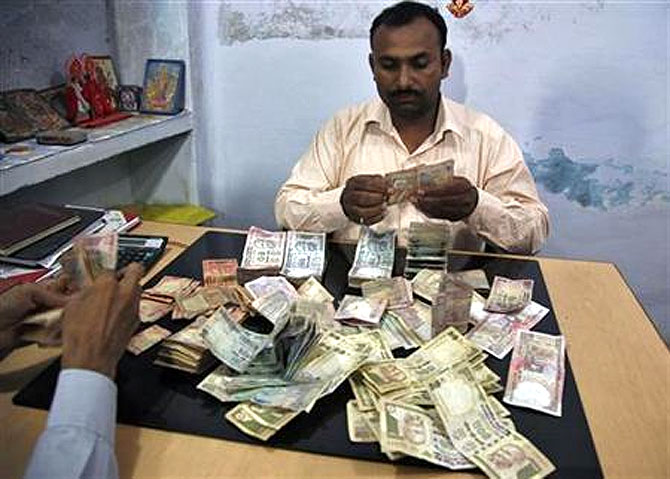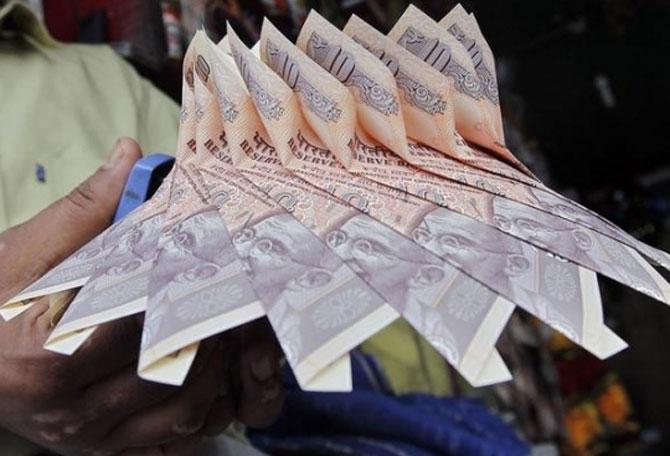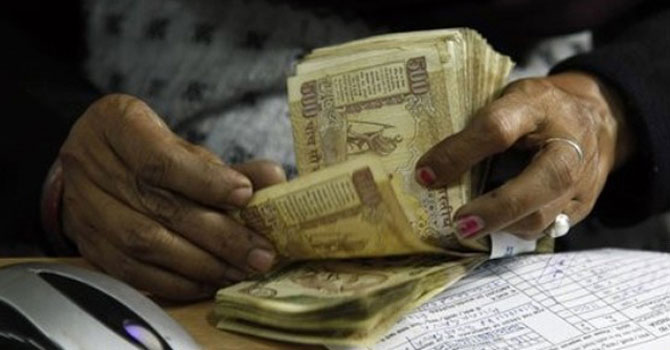Photographs: Jitendra Prakash/Reuters Abheek Barua
It’s in the same boat as other emerging markets with current account deficits, but the recent capital-raising measures may help, observes Abheek Barua.
It is fair to view the recent fall in the rupee as retribution for our macroeconomic “mismanagement”. We certainly have the fiscal overstretch of the post financial crisis years and the current account deficit (CAD) that has risen on its back to blame.
However, it might be remiss on our part to forget the fact that there has been a significant “global” element to this fall.
As fears of the withdrawal of the US quantitative easing (QE) programme grew from the second quarter of this year, all emerging market (EM) currencies came under pressure. Of them, emerging market currencies with CADs have come in for the most severe beating in this period.
At HDFC Bank, we track a basket of four major EM currencies that have large CADs (Brazil, South Africa, Turkey and Indonesia) and that has depreciated by 9.6 per cent since May.
The rupee has depreciated by 13 per cent in that period. Thus, there seems to have been a fairly pronounced “bandwagon” effect that has worked against economies that have external deficits and this has taken a toll on the rupee.
The fact that India has fared a little worse than its peers and this under-performance likely reflects specific concerns about India — the lack of progress on key legislations, the impending election cycle. The bottom line, however, is that — the rupee has not depreciated in isolation.
NOTE: The rupee fell to record low vs USD in early morning trade on Monday, August 19. Click to read the report.
Click on NEXT for more...
Please, let's not write the rupee off
Photographs: Reuters
The implication seems to be that the future of the rupee depends as much on how financial markets view this pack of CAD-hobbled currencies in the future as it does on purely domestic policy initiatives.
I think it is legitimate to argue that a dramatic recovery in any of these currencies is unlikely. For one thing, with a reduction in global liquidity (and hence the pool of global capital) investors are likely to be particularly cagey about economies that depend on external capital to plug their CAD.
There is of course an argument that the withdrawal of QE3 can take place only with the support of a sustained recovery in the US. Better US growth (with the support of Europe that seems to be bottoming out) in turn would help EM exports.
I am perhaps oversimplifying things a bit but EMs with CADs would typically be less export-oriented and more dependent on domestic markets than those who run surpluses.
That is certainly true of, say, India and Indonesia. The problem with this is that as global trade engines start revving up, the more export oriented EMs (say Taiwan or South Korea) will get investors’ attention first. CAD EMs might (at least initially) come low in that pecking order.
Does that mean that the rupee and its CAD peers are in for another round of sharp correction? Quick moves in a currency often signal the “pricing in” of an anticipated event.
These moves are also associated with what economists refer to as “overshooting” — that is a fall or rise beyond what would constitute a fair or equilibrium exchange rate. I suspect both have happened in the case of CAD EM currencies since May.
The depreciation has factored in advance, a likely taper of QE3 (triggered by the statements from the US Fed suggesting withdrawal). Overzealous traders have also perhaps oversold these currencies taking them to levels that defy underlying fundamentals. Thus another round of sharp depreciation once the QE3 withdrawal commences (I think it will happen in September) is by no means a given.
Click on NEXT for more...
Please, let's not write the rupee off
Photographs: Reuters
Again, while its basic attribute as currency associated with a CAD will continue to weigh on the rupee, it is also important to consider how this funding gap behaves going forward.
I have little doubt that we are likely to see a significant compression in the gap this year — my forecast is of a current account deficit of 3.8 per cent of gross domestic product or roughly $73 billion.
The compression will be driven largely by a fall in gold imports (from $53 to $43 billion) and some moderation in the oil import bill. I suspect that because of lumpy gold imports in May and early June (largely a knee-jerk response to a sharp fall in gold imports), the first quarter CAD would be high at around $22 billion.
The implication is that for the rest of the year, we have a lower CAD to fund per quarter. As I mentioned some of this compression will come on the back of lower gold imports. My estimate is that compared to about $15 billion in the first quarter, the per quarter gold import bill for the rest of the year will be $8 billion.
One could still argue that financing even a considerably reduced CAD could prove to be a challenge. That could well be the case. However, I am fairly optimistic (unlike the markets in general) about what the recently announced capital raising measures will yield.
I am happy with the fact that the so-called quasi-sovereign bond issues are likely to be in tranches by multiple entities instead of a grand issue by a single issuer. This will make it easier in terms of both pricing and availability of funds.
Finally, the decision to completely free non-resident external deposit rates along with the removal of statutory liquidity ratio and cash reserve ratio on these deposits has the potential of getting a reasonably large inflow, especially if these deposits are buffered by leverage offered by banks. As you can gather, I haven’t given up on the rupee yet.
Abheek Barua is with HDFC Bank. These views are personal





article